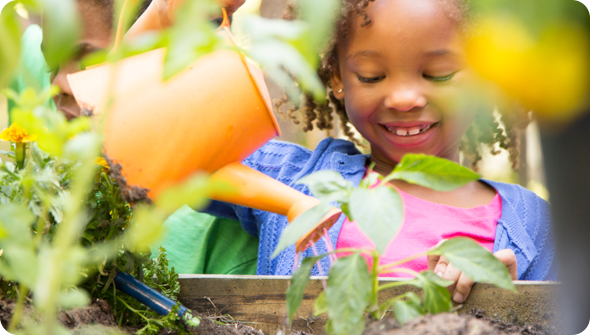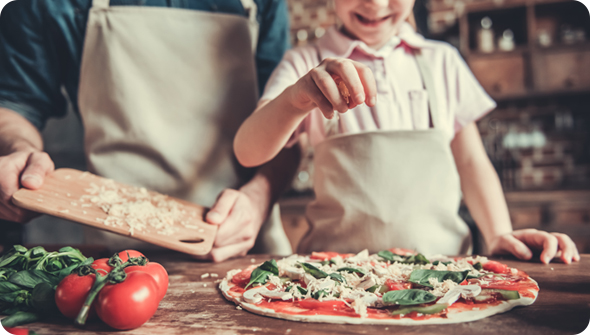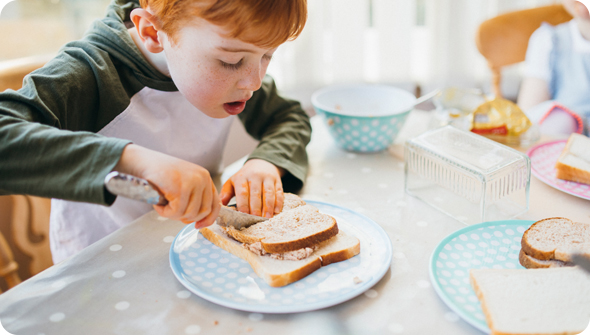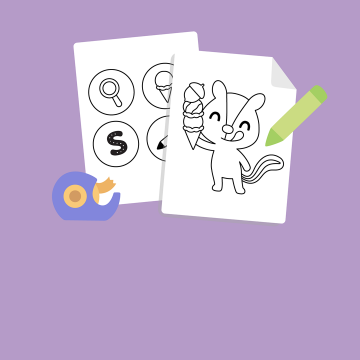Week 5: Food
Everyone’s got a favorite food! Whether yours is a crunchy caesar salad or brain-freeze-inducing ice cream sandwich, there’s lots to learn about what, why and how we eat. Hope you’re hungry!
Day 1: Growing and Harvesting
You don’t need a big backyard to grow your own food! Herbs can be grown on a sunny windowsill or balcony.

Learn loads of delicious food vocabulary in the Garden playset in School! Can you find the pineapple, bananas, watermelon and greenhouse?

Practice your harvesting skills in real life with a windowsill herb garden! Mint, rosemary, basil, oregano, chives, parsley, and thyme all grow easily with a bit of light, water and gentle, loving care.
Day 2: Making your Own Food
Making food allows you to choose the flavors and ingredients that you like the best. It’s part art, and part science!

Build creative concoctions in a safe (and mess free!) space with Super Juice in World. Ask your little ones to narrate their juice making process out loud to build verbal skills and decision making: why did they choose those ingredients? Will they blend it or change its color? What funny effect do they think it’ll have?

Build your own mini stovetop with this free !

A that actually look good enough for adults to eat, too.
Day 3: Breakfast, Lunch & Dinner
Did you know: breakfast can be sweet (like yogurt and berries) or savory (like a cheese and spinach omelette). Which is your favorite?

Whether in the morning, afternoon or night, each meal usually has these three elements: protein (like eggs, beans or fish), carbohydrates (apple, toast or potato) and fat (peanut butter, cheese or avocado). Give your little ones a shopping list, and see if they can find ingredients in each category in the Grocery playset in Sago Mini School.

Make a sandwich for breakfast, lunch and dinner with Rosie in Apartment! Discuss what ingredients would make the perfect sandwich for each meal (and don’t forget dessert!).
Day 4: Table Manners
While table manners are different around the world, it’s always polite to say please when you want something, and thank you when you’re finished. Grazie! (That’s ‘thank you’ in Italian.)

Pay Harvey a visit in Friends in Sago Mini World to practice taking turns at the table. Discuss how, while the characters may be sad they can’t eat first, it’s polite to let others go first and to share the snacks!

What’s considered polite manners varies from culture to culture and country to country. Some countries like China and Japan encourage slurping noodles, while in Chile taking a second helping is considered bad manners!

Learn how to set the table with this fun free placemat .
